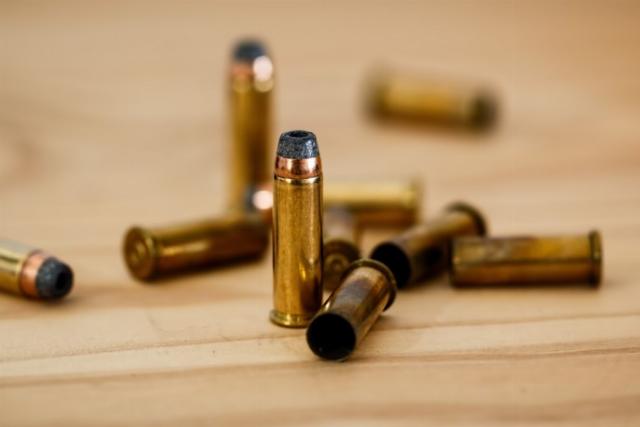In Michigan, the Blueprint of Terror Expands
U.S. citizens have become accustomed to hearing about attacks on places of worship. The latest church shooting, this time at a Church of Jesus Christ of Latter-Day Saints in Michigan, killed four and injured eight others. The alleged assassin was a 40-year-old Marine veteran with a police record; he was neutralized in a shootout with law enforcement.
Church shootings tend to follow a pattern; as “soft” targets, they are often easy to enter, and few are expecting trouble. When a gunman can’t enter, such as in the Annunciation Catholic Church event, mayhem can be had simply by shooting through the windows during a service, when the building is relatively full.
The attack on the Mormon church was something new. It incorporated more different killing methods at once than before:
The use of firearms. This is the standard way that casualties are caused in U.S. terror events. The recent event was not at all different in this respect.
Vehicular terror. In Europe, guns are more difficult to come by, but anyone can rent a car or truck and plow through a crowd. This has happened every year in the recent past at places like Christmas markets. In the LDS incident, the assailant used his truck to smash through and block the church entrance.
Arson. Fire in occupied or unoccupied buildings has been used for centuries to cause death and destruction. The shooter at the Mormon church, perhaps, used fire (as well as his truck) to block the church entrance and inflict damage. Indeed, two of the victims avoided being shot but were unable to exit the building and died as a result of the fire. (The building was totally destroyed.)
It’s uncertain if all three of the above strategies were planned to have their eventual effects. If so, this represents a new, elaborate, and uniquely effective way to inflict mass casualties on an indoor crowd. Indeed, it’s an expanded blueprint for terror against soft targets.
Not all congregations prioritize church or school safety at the level needed in this toxic climate. The premise that a religious ministry is based on peace fails to take into account that there are few softer targets than a congregation at worship services.
In this era of active shooters and anti-Christian feeling (or anti-religious feeling in general), pastors must make sure their flock is safe, just like any shepherd. In the New Normal, it’s part of the job description.
Large places of worship may choose to hire security professionals and install video surveillance technology. Smaller and less affluent churches, however, might benefit by establishing what I call a “safety ministry.” This group should comprised congregants who have some security experience, such as active and former law enforcement, military veterans, and carefully selected others. Members should evaluate the layout of the church, school, and grounds for weak spots (such as side entrances) and organize a plan of action for calling 911 and other measures when needed.
Training goals might best be accomplished with the cooperation and assistance of local police. They can help train ushers and other church members in how to identify the behavior of possible perpetrators of violence.
The call for volunteers for such a ministry should be made publicly, and their purpose should be frankly (but calmly) explained so as to emphasize their benefits to all those attending the church.
A simple way to prevent or abort acts of violence in places of worship is the placement of friendly and visible “greeters” or ushers at church entrances. These people can look for “anomalies,” such as someone inappropriately dressed for the weather. If a person seeking entry is wearing an overcoat in hot weather, it could be because he is concealing a weapon. Having ushers outside could also make it easier to identify those acting nervously, loitering in the parking lot, or otherwise exhibiting suspicious behavior.
Safety ministry personnel should have the ability to close and lock doors to prevent a gunman from entering. Conversely, they can also open all the exits that could be used to direct congregants out of harm’s way when necessary. Ushers can also look for packages left behind that might hide an explosive device.
This is a good strategy for the active shooter on foot. What about the assailant in a vehicle? Looking at my own church, there are stairs and relatively narrow ramps that wouldn’t allow a vehicle to easily smash through the entrance. Places of worship without these obstacles might consider the placement of “bollards.” Bollards are sturdy barrier posts used to prevent traffic from entering an area. They are common sights outside federal buildings.
Of course, safety ministry personnel should have training on how to stop bleeding and equipment such as first aid kits geared to help them accomplish this goal. The number and sophistication of such kits may depend on the number and level of training of parishioners. Indeed, the church or school might consider arranging such training for its entire congregation or staff.
One prediction I made some years ago was that first aid kits would be fixtures on the wall, as common as fire extinguishers. This has, sadly, come true. I also envision a future where safety ministries are standard operating procedure for faith-based venues.
As we harden our places of worship against attackers, we can expect the deranged and disgruntled to become more creative in their strategies to cause murder and mayhem. Preparing for untoward events should be the responsibility of every pastor, teacher, and parishioner...and yes, even of students. With a plan of action, they’ll have the best chance to keep the faithful safe in the uncertain future.
Joe Alton MD is the N.Y. Times/Amazon bestselling author of the two-time Book Excellence Award Winner in Medicine, The Survival Medicine Handbook:
“The Essential Guide For When Help Is NOT On The Way” and other books.

Image via Pxhere.